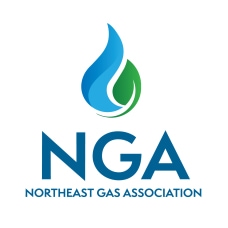PSMS Lessons Learned - April 2024 -Robust Communication is Vital to Pipeline Safety

Communication is vital in pipeline safety to ensure that everyone involved, including operators, contractors and workers onsite are aware of potential risks. Effective communication helps coordinate activities, disseminate vital information, and respond promptly to emergencies. It ensures that proper procedures are followed, reducing the likelihood of accidents and minimizing their impact if they occur. Regular updates and clear communication channels enhance safety awareness and promote a strong pipeline safety culture among all stakeholders.
Description of Event:
A tree and ground maintenance contractor inadvertently damaged a 124 PSIG distribution gas main test point while mowing in a Gas Right of Way (ROW). The mowing operators lacked knowledge of the location of the asset, due to insufficient communication with company contractor oversight supervision, and an inability to visually locate the asset through the overgrown vegetation.
Root Cause(s) and Contributing Factor(s):
Human: Machine Interface – Arrangement/placement, lack of visual or prior knowledge of the location of Gas Asset.
Key Corrective Actions:
- Before commencing work in the ROW, second-party contractors must submit a schedule to contractor oversight personnel with sufficient notice to allow the ability of the company to highlight / mark areas of concern and safeguard assets.
- Investigate adding a new layer within GIS that provides additional detailed asset information within the ROW, such as the location of surface access test points, to address future maintenance concerns.
- Reinforce that contractors are required to report ALL incidents in accordance with company policies.
Key Lessons Learned:
- Initiative-enhanced pre-job briefs should include a review of assets being managed within ROW’s.
- Ensure mandated communication sessions prior to the start of work, regardless of how “routine” work seems.
- Focused, pre-job briefs, regardless of how routine or insignificant the planned activity appears, are key to avoiding unintended consequences.
- It takes only moments to have a relevant conversation that could eliminate an injury from occurring or an asset from damage.

The Importance of Three-Way Communication in Pipeline Safety
The Problem with Pipeline Safety Communication is the Illusion that it Takes Place……….
When it comes to pipeline safety, communication is key. 3-way communication, also known as “active listening,” is a process that allows all parties involved in a conversation to share information and understand one another clearly.
This type of communication is essential in the workplace, where misunderstandings can lead to unintended consequences. 3-way communication can help prevent accidents by ensuring everyone is on the same page and knows what to expect before a job begins!
How does three-way communication work?
- The sender communicates his message to the recipient.
- Reciprocal acknowledgment of the communication is made by the receiver repeating all relevant information to the sender. The receiver must ask the sender if they understand the communication.
- The sender must confirm that the receiver understood the message. If it isn’t understood, the sender should indicate that it is not understood, and the three-way communication process needs to begin.
You can repeat this process until everyone knows what is being said. 3-way communication is an effective way to prevent misunderstandings and keep workplaces safe.

